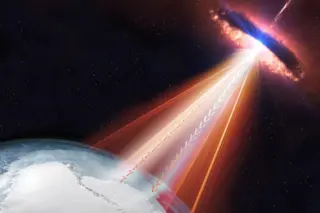We’re figuring out how to see the cosmos in a new way. For centuries, humans learned about the universe with just their eyes, observing in visible light. We eventually developed technology to see in other wavelengths of light — infrared, X-ray, gamma ray — to discover even more about the universe. Now, thanks to two papers in Science in July, astronomers can see with neutrinos, too.
Neutrinos are thought of as ghostly particles because they interact so little with matter. Trillions of the subatomic things pass through your body and the rest of the planet every second, without disturbing any atoms. This indifference to anything in their way makes them ideal for astronomers hoping to understand the extreme environments that can produce them and other interesting but easily blocked particles, like cosmic rays and extremely energetic light.
“Light is whatever’s on the outside of an object,” says University of Maryland ...















